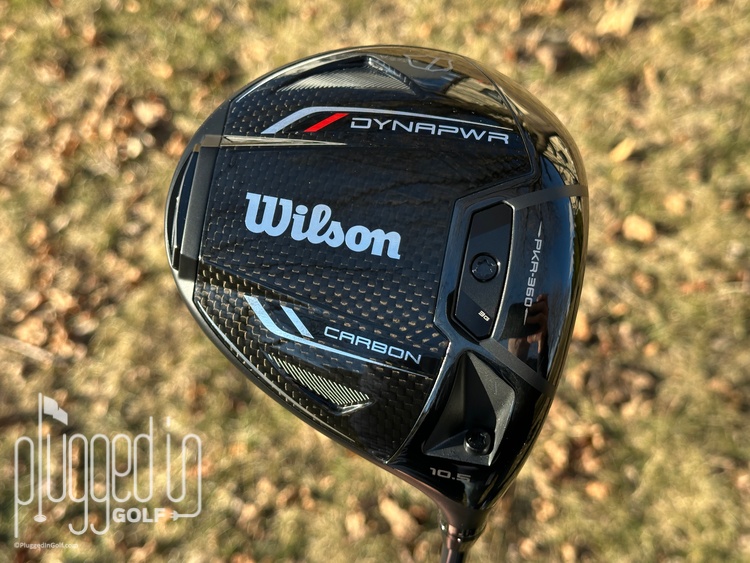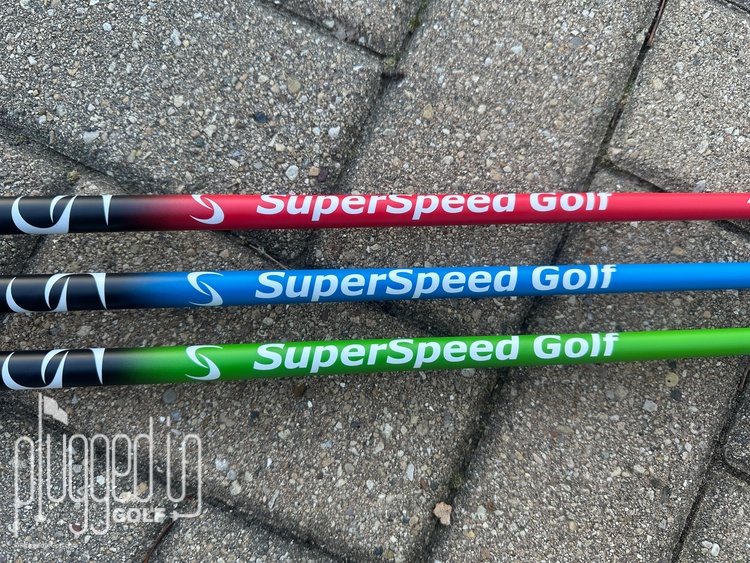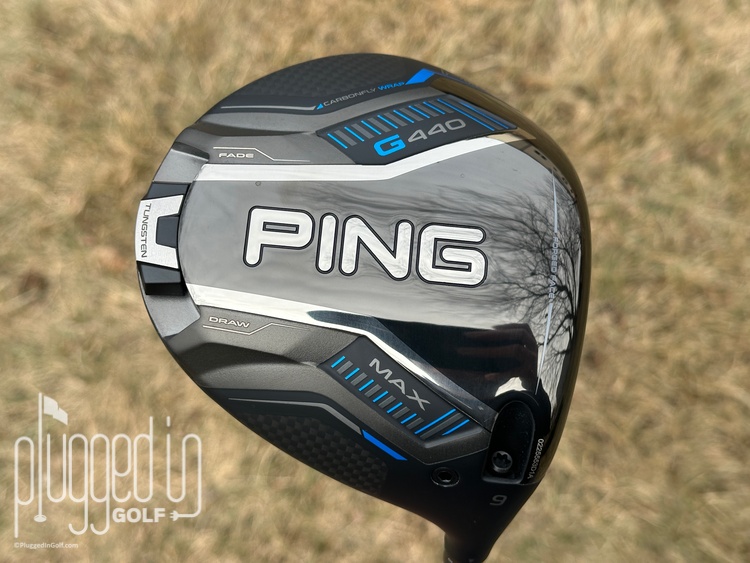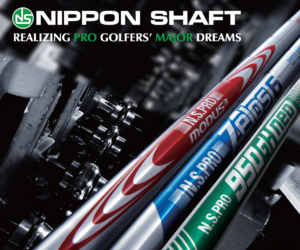50 Words or Less
The Titleist GT4 driver is built to help high spin players get more distance off the tee. Very low spin, mid launch. Lots of adjustability. Smaller head – 430 cc. Tremendous ball speed.

Introduction
For the highly skilled Titleist fans, the number 4 is special. In the last several driver families, 4 denotes the lowest spinning, smaller model, the one reserved for the best ball strikers. While that’s not a category I fall into – especially off the tee – I put the new Titleist GT4 driver through its paces to find out who it is for and if those of us with more pedestrian driving abilities can consider bagging it.

Looks
While I’m completely enthralled with the look of the GT3, it’s hard not to turn your head at the Titleist GT4 driver. At 430 cc, it’s simultaneously attractive and intimidating. It has a slight pear shape, leaning toward the toe, as you would expect from a players driver.
In the bag, the GT4 looks a lot like its brothers. The sole is predominantly black with the “GT4” branding sitting on a slash of silver. “Titleist” and the loft indication are pushed to the extreme toe and heel. The one unique feature of the GT4 is the weight port next to “GT4”, but it’s very subtle – the antithesis of “Look at me!” tech.

Above you can see the Titleist GT4 driver (left) side-by-side with the GT3. To my eye, the GT4 looks very similar to the GT3, just smaller in every way. Though the GT4 gives the impression of being much smaller, the difference in face width and front-to-back depth is only about 1/8″.
Sound & Feel
Like its brothers, the Titleist GT4 driver has a quiet, understated impact sound. On center, there’s a satisfying “crack,” but the volume is turned way down. It’s very impressive that Titleist was able to maintain this more traditional sound despite the use of a multi-material head.
The sound of impact marries perfectly with the solid feel. This is as close as you can get to the feel of a persimmon driver in modern clubs. Though the GT4 has a thin, high tech titanium face, it feels more like you’re hitting the ball with a sledgehammer.
Predictably, the feedback from the Titleist GT4 driver eclipses even the GT3. Your hands will immediately know where the ball met the face. I never found the feel to be unpleasant, but there’s definitely less reward on mishits than on pure strikes.

Performance
The Titleist GT4 driver’s main reason for being is low spin. If you’re a player who generates over 3,000 RPM of spin on your driver, the GT4 has the potential to unlock substantial distance gains. Drew was fit into the the GT4, and it’s easily the longest driver I’ve ever seen him hit.

The other half of the GT4’s distance equation is its incredible speed. This is one of the most aerodynamic heads in golf, which helps players to generate more club speed and ball speed. The new aerodynamics were unlocked by the multi-material construction [learn more about this direct from Titleist on the podcast HERE] which is the major upgrade over last generation’s TSR4 [review HERE].

In golf equipment, as in life, there are tradeoffs. To get that ultra low spin, some forgiveness is sacrificed. While not as taxing as you might think, the Titleist GT4 driver is definitively the most demanding of the GT drivers. The Speed Ring face keeps the ball speed fairly high on mishits, but if you’re routinely missing the center of the face by large margins, it would be best to opt for the GT2 driver [review HERE].

As in the last generation, each GT driver has its own package of adjustments. All three drivers have Titleist’s SureFit hosel with 16 positions for changing loft and lie. To this, the Titleist GT4 driver adds “Dual Spin-Control Settings.” This translates to two weight ports – one near the face, one at the trailing edge – where you can swap a heavier and lighter weight. With the heavier weight forward, you get the lowest spin possible. Pushing the heavier weight back adds more forgiveness (my numbers above were achieved with this setting). Per Titleist, with the weight back, the GT4 has forgiveness somewhere between the GT2 and GT3 driver [review HERE].

For me, the GT4 is a blast to hit, but it’s not my ideal fit. When you hit it pure, the ball comes out on a penetrating trajectory and runs for days. The smaller head feels controlled and nimble during the swing, begging you to draw or fade it around doglegs. However, I don’t think I’ve ever had a driver spin 3000 RPM, and I do need more forgiveness, so the GT3 will be staying in my bag [full WITB HERE].

Conclusion
For players that are willing to give up a little forgiveness to drop spin and optimize their numbers, the Titleist GT4 driver is one of the best you can buy. Better players will be surprised at how forgiving this smaller head is, particularly with the heavier weight back, and all players will appreciate the speed unlocked by this aerodynamic head. Make sure to visit a Titleist fitter to get the right GT driver in your bag.
Support Plugged In Golf, Buy HERE
Titleist GT4 Driver Price & Specs

He founded Plugged In Golf in 2013 with the goal of helping all golfers play better and enjoy the game more.
Matt lives in the northwest suburbs of Chicago with his wife and two daughters.
- Wilson DYNAPWR Carbon Driver Review - February 19, 2025
- SuperSpeed Speed Sticks Pro Review - February 18, 2025
- PING G440 MAX Driver Review - February 17, 2025
















4 Comments
Had general consensus to your reviews as always. Curious to see how titleist quantifies forgiveness to determine that the heavy back weights GT4 is in between the 2 & 3 but who knows. Not sure I felt that when i tried them but to each to their own.
I appreciate how you always have a side by side pick of the clubs at address to try to show the differences as it is hard to depict on pictures. On that is there any way to have each club pic at the same address position then crop them together into one?
Thanks!
I can attest to the low-spin magic of the “4” series – after a lifetime of watching what felt like solidly contacted drives balloon and fall out of the sky like wounded ducks, TSR4 was a revelation. I always feel like my worst drives are bad swings/my fault, so if there’s a forgiveness loss I don’t really notice it and am happily trading it for the (significant) extra distance.
Would you say there’s much of an upgrade here over the TSR4? Don’t think I’d spend the money either way, but curious on your perspective having hit them both.
Mike,
I think the GT4 is a bit more forgiving than the TSR4, but it’s not night and day. As always, there are going to be some players where the one generation switch is going to do something amazing for some fitting reason, but most players will see a small bump in performance.
Best,
Matt
Matt, yet another great review. I had success with the tsr4 for a bit but never found the right shaft. Been gaming rogue st max ls on and off for the last few seasons and I’m excited to give the GT4 a go. My driver spin is consistently over 3,000, and sometimes 4,000. Club head speed 114-118 and carry only like 270. I’m going to do some shaft testing because I worry about dispersion (7hcp). I’m hoping to find the unicorn shaft. Heavier weight, but with good feel. I have hope for this season with this driver.